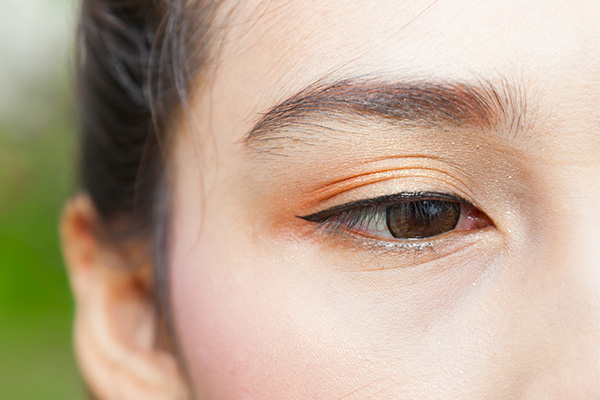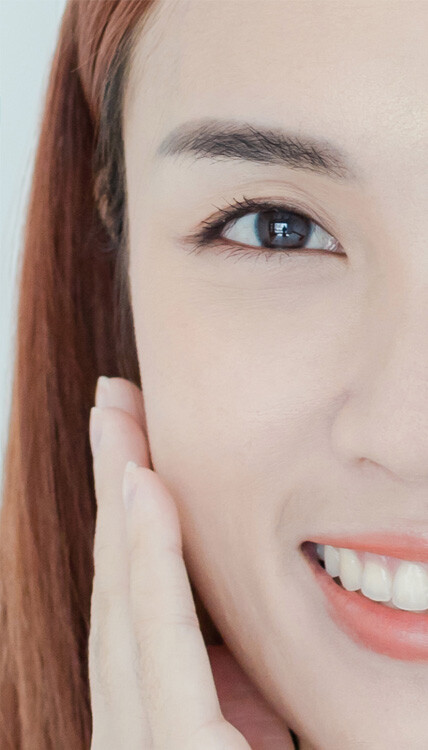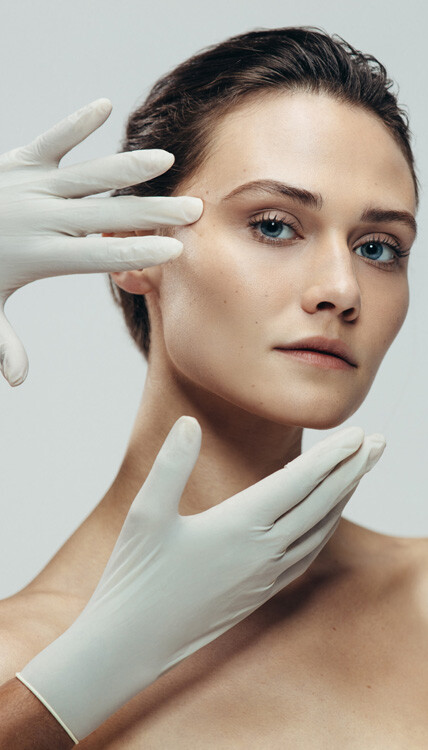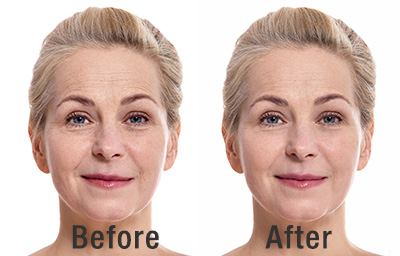Do you find your breasts too small or have one that is smaller than the other? Would you like to reduce the size of your breasts after pregnancy? Do you want to correct uneven breasts after breast surgery for other conditions and to improve your self-confidence?
If so, then breast augmentation is a perfect procedure for you.
Also called augmentation mammoplasty, breast augmentation is a surgical procedure to increase the size, shape or fullness of the breasts. During the procedure, the surgeon makes an incision and places a silicone, saline or alternative composite breast implant under breast tissue or chest muscles. Fat from another part of the body may also be used—a procedure called fat transfer breast augmentation.
What are breast implants made of?
A breast implant is a medical prosthesis placed inside the breast to create, reconstruct or augment the physical form of the breast. There are three main types of breast implants used in breast augmentation.
1. Saline implants
These are implants filled with sterile saline solution. The salt solution is contained within an elastomer silicone shell. The amount of saline that your surgeon will allow in the elastomer depends on the goals of the surgery, including the firmness, shape or size to be achieved. If the saline implant leaks, the salt solution is absorbed and expelled naturally by your body.
2. Silicone gel-filled implants
These are implants made of a silicone outer shell and filled inside with a silicone gel. Again, the amount of silicone gel added into the silicone shell depends on the shape, size or firmness of breasts to be achieved. If a silicone-filled implant leaks, the gel either stays in the shell or escapes into the breast implant pocket. Since leaking silicone-filled implants may or may not collapse, you will need more regular checks with your doctor for this implant than if you choose saline-filled implants.
3. Alternative composite implants
 Breast implants may also be filled with soy oil, polypropylene or other material. When choosing an alternative composite material, your plastic surgeon will consider whether you have adverse reactions or allergy to any of these materials. In the end, the material chosen should not cause problems if it leaks into your body.
Breast implants may also be filled with soy oil, polypropylene or other material. When choosing an alternative composite material, your plastic surgeon will consider whether you have adverse reactions or allergy to any of these materials. In the end, the material chosen should not cause problems if it leaks into your body.
What can breast augmentation do for you?
- Increase the fullness and projection of your breasts
- Improve the balance of your breasts and your hip contours
- Enlarge breasts that are naturally smaller
- Restore breast shape and size after weight loss, pregnancy or breastfeeding
- Restore your breast symmetry when your breasts are asymmetrical
- Reconstruct your breast(s) after mastectomy, injury or various conditions
- Boost your self-image and self-confidence
When considering breast augmentation, you will first discuss your goals with your plastic surgeon. The goals should be realistic and informed by what the procedure can do. Your surgeon will also help you understand the possible risks, complications and follow-up care. A typical breast implant lasts 7-12 years on average.
Breast augmentation does not correct severely drooping breasts. Actually, drooping breasts require a different procedure called breast lifting. The breast lift can be performed along with breast augmentation to make your breasts both fuller and lifted, but it can also be a separate operation. Your plastic surgeon will guide you in making this decision.
How should you prepare for breast augmentation?
You will start by choosing a surgeon to help you with the procedure. A skilled and experienced plastic surgeon such as Dr. Effie Politis will offer good advice and perform the procedure with a higher chance of success. So if you are considering the operation, speak with your plastic surgeon about it and be specific about your preferences for breast size, feel and appearance. Once you choose to have breast augmentation surgery, your plastic surgeon will help you choose the size and shape of implant you need by putting different sized implants into your bra to see how they fit and feel.
The surgeon will describe the specific types of implants that may be used—textured or smooth, round or shaped like a teardrop, saline or silicone—together with options for surgical techniques. It is your responsibility to review information provided to patients by the manufacturer of the implant. You will also need to keep copies of this information for your records.
Before you undergo the procedure, consider the following:
- Breast implants do not last a lifetime; the average life span is 10 years.
- Breast implants do not prevent breasts from sagging; you may need a breast lift in addition to breast augmentation to deal with sagging.
- After breast augmentation, mammograms might be more complicated.
- While most women are able to breastfeed after the procedure, some find it a challenge.
- A routine MRI is necessary three years after a breast augmentation—though studies are yet to demonstrate the usefulness of the imaging.
- If you change your mind and opt to have breast implants removed, you will need a breast lift or other corrective surgery to restore the appearance of your breasts.
- Breast implants and the related surgeries and imaging tests are not covered by insurance.
Your plastic surgeon may recommend that you have a baseline mammogram before the surgery. If you are on certain medications, such as aspirin or other medications that increase bleeding, your doctor may adjust them. If you are a smoker, you will have to stop for a while before the procedure. Likewise, you should arrange for a friend or family member to drive you home after the surgery and even stay with you for a day.
What should you expect during the procedure?
This is a surgical procedure. A general anesthetic will be used so that you are asleep during the operation—though local anesthesia may also be used, which means you would be awake during the procedure.
There are three incision options your surgeon will consider.
- Incision in the crease under your breast (infra-mammary incision)
- Incision in the armpit (trans-axillary incision)
- Incision around the nipple (periareolar incision)
The choice of incision depends on the type of implant, surgeon-patient preference, your anatomy, and how much enlargement is involved.
After making the incision, your plastic surgeon will insert the implant into a pocket.
There are two ways of placing the implant.
- Sub-mammary (sub-glandular) placement behind the breast tissue, over the pectoral muscle.
- Sub-muscular placement under the pectoral muscle—recovery may take longer and there may be slightly more pain after the procedure.
To close the incisions, your plastic surgeon will apply layered sutures or stitches in your breast tissue. The stitches, surgical tape or skin adhesives will help to close the incisions and keep the skin closed. While the incision lines will be initially visible, they will fade in time. Swelling caused by the surgery will resolve within two weeks.
How long does recovery take?
Soon after the surgery, the anesthetic will wear off and your surgeon will provide medicine to relieve the pain. The sutures are made of absorbable or dissolvable material and will disappear within 6 weeks. But if your sutures do not dissolve or if drainage tubes are placed near your breasts, you will need a follow-up appointment to remove them.
Your surgeon will also provide information on how to care for your breasts after the procedure, how to take prescribed medication, when to schedule a follow-up visit and when to call your doctor for help. You will be advised to seek immediate medical help should you experience any sign of infection, such as chest pains, shortness of breath, unusual heart beats, fever, warmth or redness in the breast area.
Your doctor will also advise you on what type of brea to wear and post-operative exercises, such as moving and flexing the arms to relieve discomfort and pain. You should not engage in strenuous physical activity for the first 6 weeks after the surgery.
What are the risks and complications of breast augmentation?
Every surgical procedure has risks, including breast augmentation. Among patients who undergo breast reconstruction, 46% of those with silicone gel implants and 21% of those with saline implants typically require at least one additional surgery within 3 years. Likewise, 25% of women with silicone implants and 8% of those with saline implants change their mind and undergo surgery to remove the devices.
It is not uncommon for breast augmentation patients to have some kind of complication.
The common risks and complications include:
- Need for additional surgeries
- Breast pain or changes in nipple and breast sensation
- Infection, bleeding, fluid accumulation or leaking of the implant
- Systemic symptoms, commonly known as Breast Implant Illness (BII)
- Rupture (tears or holes in the shell) of saline-filled and silicone gel-filled implants. The rupture can be a deflation (with visible change to breast size of saline filled implants) or a silent rapture (without visible change to breast size of silicone filled implants).
- Capsular contracture, which is the hardening of the area around the implant and which can distort the shape of the implant by becoming red, thick and painful.
- Breast-Implant Associated-Anaplastic Large Cell Lymphoma (BIA-ALCL), a rare cancer of the immune system. The Food and Drug Administration (FDA) believes women with breast implants have a very low but possible risk of developing ALCL, though further research is still necessary to fully understand how breast implants are related to ALCL.
Breast augmentation is a great option for enhancing the size and shape of your breasts, improving your body image and boosting your self-confidence and self-esteem. At Politis Plastic Surgery, we offer the procedure to women who want to increase the fullness and projection of their breasts, enlarge small breasts, restore breast symmetry, reconstruct their breasts after mastectomy or injury, restore breast size and shape after breastfeeding, pregnancy or weight loss, and to boost their self-image and self-confidence.
If you are dissatisfied with the appearance of your breasts and considering breast augmentation, contact Dr. Effie Politis for a consultation. For more information on breast augmentation, visit the Politis Plastic Surgery website.
 Blepharoplasty is generally well tolerated by patients. Successful operations done by an experienced plastic surgeon will enhance the appearance of the eye area, producing a more youthful and rested look. However, it is considered a major surgery, so you should think carefully about your specific expectations and goals.
Blepharoplasty is generally well tolerated by patients. Successful operations done by an experienced plastic surgeon will enhance the appearance of the eye area, producing a more youthful and rested look. However, it is considered a major surgery, so you should think carefully about your specific expectations and goals.

 Breast implants may also be filled with soy oil, polypropylene or other material. When choosing an alternative composite material, your plastic surgeon will consider whether you have adverse reactions or allergy to any of these materials. In the end, the material chosen should not cause problems if it leaks into your body.
Breast implants may also be filled with soy oil, polypropylene or other material. When choosing an alternative composite material, your plastic surgeon will consider whether you have adverse reactions or allergy to any of these materials. In the end, the material chosen should not cause problems if it leaks into your body.
 Plastic surgery helps to restore the function of tissues and skin. It can repair abnormalities existing from birth, such as cleft lip and palate, birthmarks and webbed fingers. It can reinstate areas of the body damaged by removal of cancerous tissue, such as from the breast or face. It can also restore the body’s function and appearance after excessive burns or other serious injuries, including the treatment of burn injuries soon after an accident or
Plastic surgery helps to restore the function of tissues and skin. It can repair abnormalities existing from birth, such as cleft lip and palate, birthmarks and webbed fingers. It can reinstate areas of the body damaged by removal of cancerous tissue, such as from the breast or face. It can also restore the body’s function and appearance after excessive burns or other serious injuries, including the treatment of burn injuries soon after an accident or 